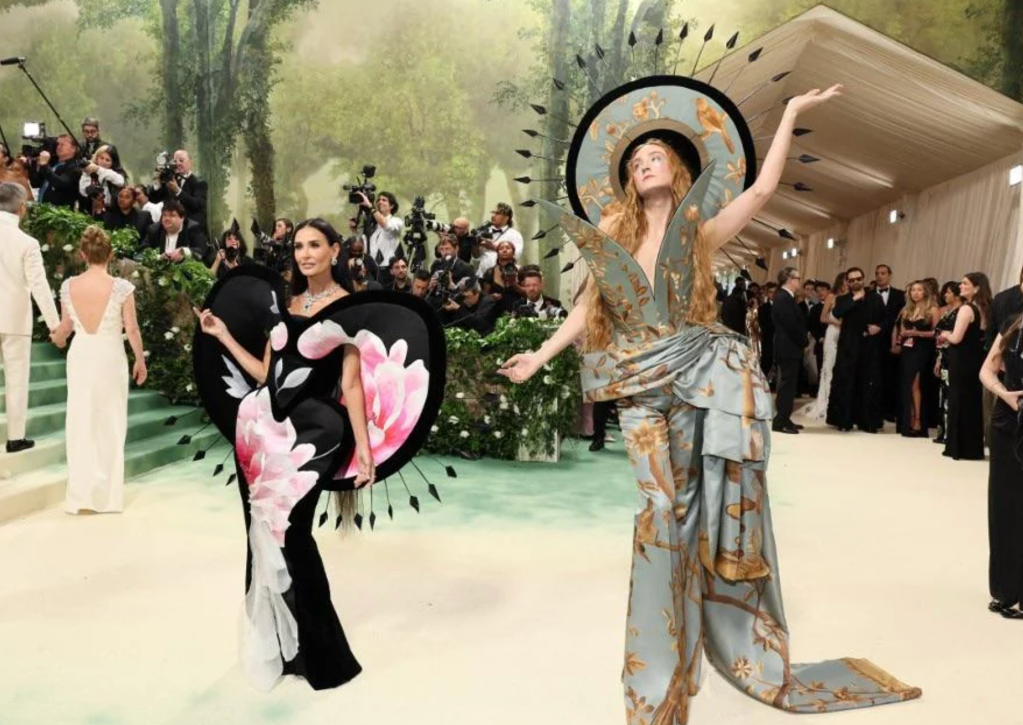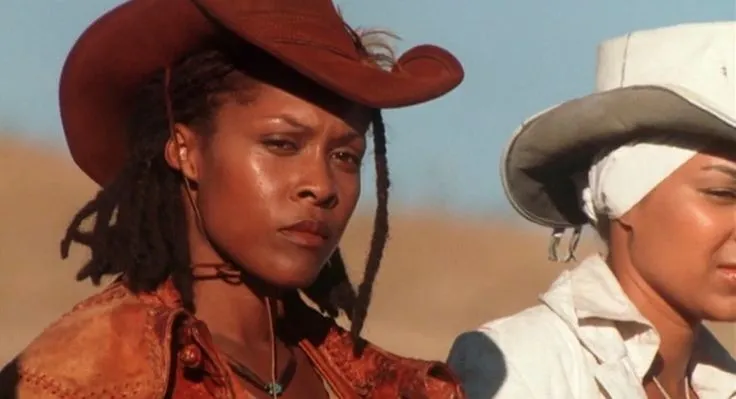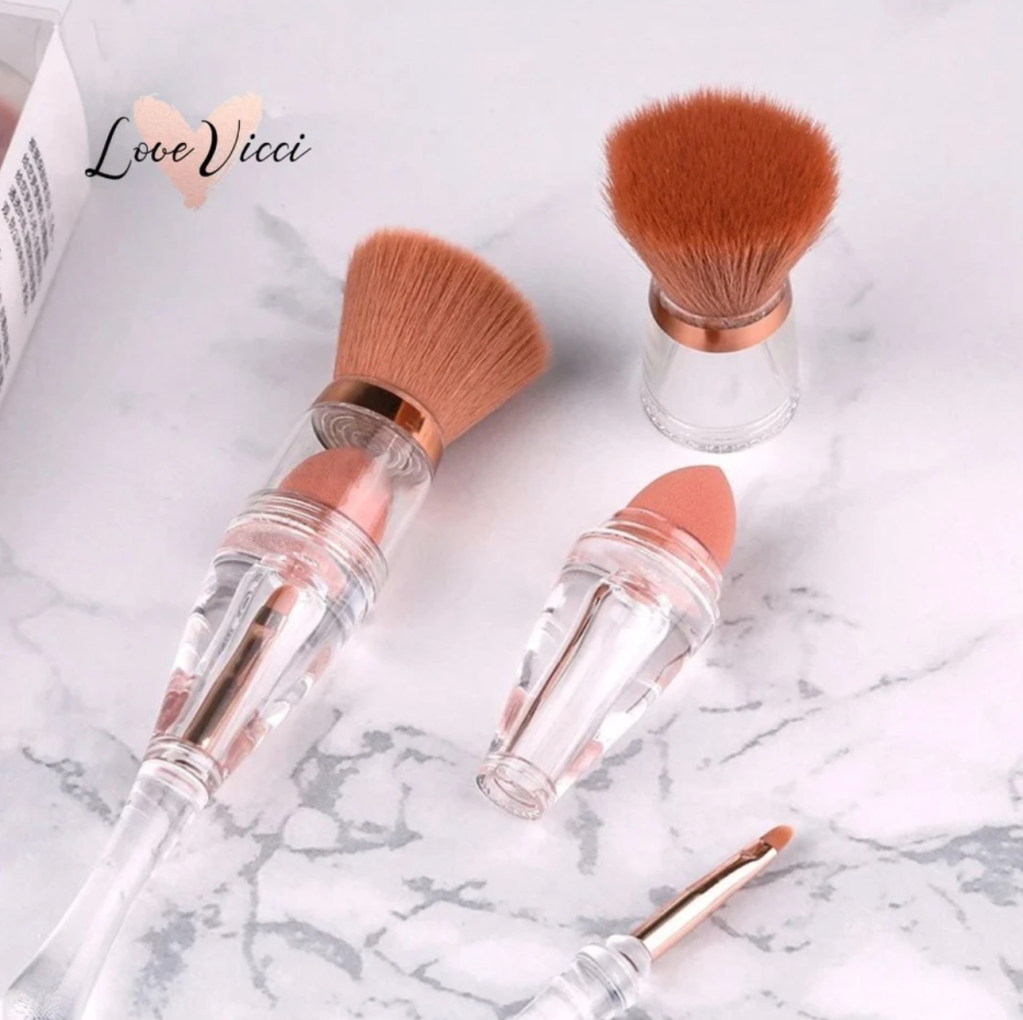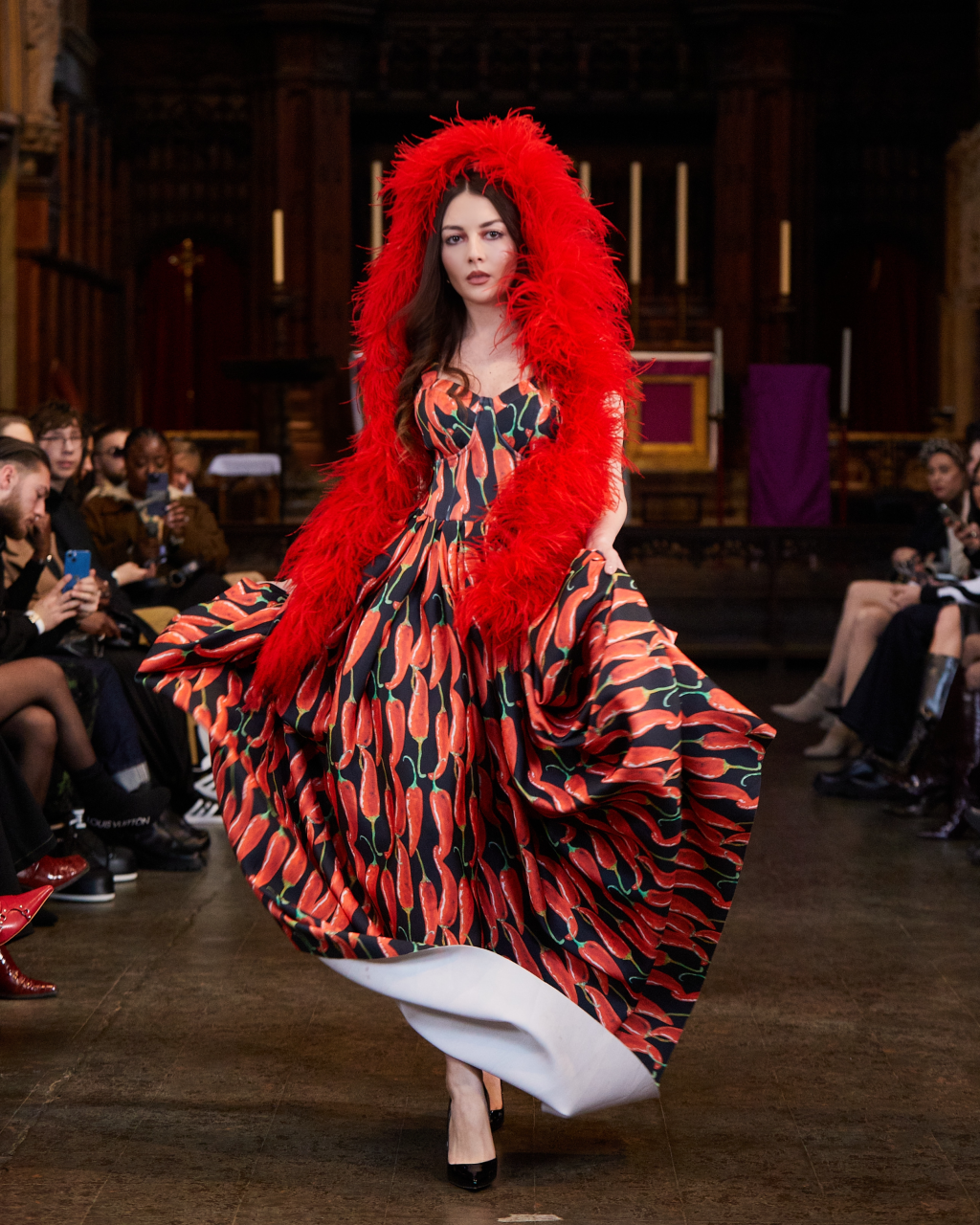Is the ‘oppositional gaze’ something that cinematic experience can create or is this something that must be taken up by the spectator?
I believe that the cinematic experience can create the oppositional gaze through characterisation to represent the Other, and awareness of authorial intention. bell hooks and the film, Get Out, however, show that the spectator must ultimately be the one to take up the oppositional gaze because it is the spectator’s relation to characters and film plots, their resistance to the mainstream, and own experience that creates an awareness which arguably enables one to have the power to look through an oppositional gaze.
The ‘oppositional gaze’, coined by bell hooks, is the rebellion for a black person’s right to look and identify with power positions such as whiteness and masculinity. A black person’s right to a gaze in films was repressed by the exclusion of representatives of the black community, which means that the Other’s experiences was not depicted through the cinema lense. The oppositional gaze is an all-white cast, black face, little representation. Hollywood films with low representations of the Other are present but it is the oppositional gaze which makes the spectator aware of this, if they take it up. bell hooks argued that the spectator takes on the oppositional gaze as resistance to lack of representation of black men and women in films. hooks gives the example of the black child told off for looking too hard at adults because it is seen as a “gesture(s) of resistance” (hooks, 2010: 247) to the adults power over one’s gaze; she defers that “there is power in looking” (hooks, 2010: 247).
“all attempts to repress our black people’s right to gaze had produced in us an overwhelming longing to look, a rebellious desire, an oppositional gaze” (hooks, 2010: 248).
Black female spectators can take up the gaze, embrace the power of the look and resist the white male gaze, which hooks sees as an active relationship between spectator and film. Perhaps black women are forced into this gaze by their past repression to look, but this force still allows for control over their power to look which is what one desires. One can view films from their own gaze – the oppositional gaze.

Representation in cinema is important because it represents reality, and therefore shapes what one understands of the world, especially those less exposed and impressionable. Ones awareness of the screen is the expectation that it offers pure representation. Research from the media, diversity, and social change initiative at USC Annenberg revealed that Hollywood films included just 13.6 percent of black characters in contrast to 70.8 percent of white characters. Films with the inclusion of a black woman still omitted the focus on her with 34 out of the top 100 films in 2016 depicting a female lead or co lead, only having 3 out of 34 of the female actors as a representation of an underrepresented racial/ethnic group. The white gaze is then perpetuated through films focus on the dominant white female which keeps black women subordinate. The oppositional gaze has encouraged black women to not take stereotypical roles in films, and to portray their reality. Based on the factor of lack of representation, one could argue that the oppositional gaze must be taken up by the spectator because it is easier to notice little representation of yourself; those with the oppositional gaze from the viewpoint of the Other are already aware of this through an inability to relate to the experience of white characters.
Jordan Peele’s film, Get Out, partially embodies the oppositional gaze through character representation; however, this is done in the Hollywood context. Black women in the film are represented as silent and passive, merely observational and complacent, perhaps an object of the white male gaze. Black people are also objectified in the film, and fetishized. The Armitage family only see the protagonist, Chris, for his physical body and not his creativity or anything about his character. The blind photographer at the gathering wants Chris’ eye, in both the metaphorical and literal sense; yet, this is not admiration for the black man’s creativity but for his physical feature. Additionally, Peele uses a mainly white cast, although this is arguably to present the appearance of the wealthy and white American family as a premise for the plot.
On the other hand, the film succeeds in turning the white gaze on its head, although not to the full extent of the white male gaze as the male gaze is still arguably present in the lack of black female representation. Peele is successful in portraying black people as creative through Chris’ occupation as a photographer, in opposition to the servants at the Armitage household. Stereotypes of black servants in a white household are perhaps used to confront the reality of race relations. The character of passive Georgina who is like the laidback, content perception of black people with no intention to ‘get out’ is also stereotypical and closely embodies the mammy cliché of the maternal maid. Perhaps it was Peele’s intention to show the invisibility of black women in films as Georgina’s body is used as a host for the Armitage grandmother. On the other hand, if this was not Peele’s intention, then it would appear that Get Out does not tackle the male gaze as Chris and his best friend, Rod, are the main, and only liberated, black people shown in the film, who are both male. There is little representation of protagonist, liberated black women, besides the small character of the policewoman who Rod asks for help; her portrayal is also an arguably negative representation as she refuses to take Rod’s story seriously and laughs in the face of danger, perhaps suggesting the unhelpfulness of the U.S police in the black community. The film seems to take on a black male gaze; so, perhaps it is the spectator that must assume the complete oppositional gaze.

On one hand, the authorial intention of the film could perhaps lead the spectator to take on an oppositional gaze. Peele based Get Out on America’s racial tensions; so, perhaps spectators would know to expect a film with either greater representation of the Other, or, a focus on the Other, so they would be looking out for this. Peele’s intention to highlight racial tensions is linked to the plot where black people are lured to the white family to have their bodies auctioned as property (as reminiscent of the slave trade) and psychologically taken over by their white buyer with hypnotising and brain surgery. In a beginning scene at the Armitage house, Rosie’s father, Dean, shows Chris his father at the Olympics having lost out to Jesse Owens, a black athlete. Dean mentions that (his father) “almost got over it”, which is later revealed to have been a hint to a generation of want of black physiques for fashion, sex, and athleticism, suggestively born from his father’s bitterness in losing first place because of the ‘natural’ athleticism of black people. Furthermore, Rosie’s brother, Jeremy, is fixated on Chris’ appearance, referring to his “frame and genetic makeup” at the dinner table scene, showing his own jealousy of the stereotypical black man’s sports ability. Additionally, at the gathering scene, a family friend, Gordon Greene, makes a remark on Chris’ “grip” and asks if he played golf, showing his intentions to use him and the overall fetish and stereotypes of black men.
To assume the oppositional gaze, one must arguably see and rebel from the restrictions which are put onto the Other, and Get Out does not completely do this where black women are concerned; perhaps because of its Hollywood context where the white male gaze is prolific. If the film does not take on the oppositional gaze itself then how can the cinematic experience create it for the viewer? Peele’s inclusion of a black male protagonist still sees black females as underrepresented as aforementioned, showing the male gaze to be prevalent in Peele’s film. Black women are the back drop to black male actors and are arguably representative of a black man’s view of black women; it keeps them separated and in the oppositional gaze.
On the contrary, one might argue that Peele’s resistance to the white gaze whilst arguably perpetuating the male gaze, is due to the past oppression on the black male gaze. In her essay, hooks notes how the black male gaze was under surveillance by the white Other, so “the private realm of television screens or dark theatres could unleash the repressed gaze. There they could “look” at white womanhood without a structure of domination overseeing the gaze” (hooks, 2010: 250). The film is then a space where the black male gaze can go unpunished. Peele’s later comment on his fear of ‘the evil white girl’ as a black man himself, suggests that Get Out could simply have been told in the intention to project his own fears that the Other can relate to, and not necessarily exempt the black female experience. One might argue, however, that a black female spectatorship taking this view to not look deeply into the film arguably reinforces hooks’ point that “some of us chose to stop looking (as) a gesture of resistance” (hooks, 2010: 253), to reject negation; therefore, the spectator must be the one to take on the oppositional gaze. Furthermore, Peele using a black male gaze in his film as a director and spectator arguably stands to prove that the spectator must take up the oppositional gaze, because the cinematic experience shows Get Out in a black male gaze, but one can watch it and read into Georgina’s silencing from a black female spectatorship view, or relate to Rosie Armitage in the initial part of the film as a white female spectator. The spectator can therefore choose to resist the image portrayed to us and interpret it towards one’s own look.
hooks’ theory is to abolish fear from society in looking, whilst Get Out, on the other hand, arguably reinstalls fear in the Other by use of the horror genre plot where the Other is under attack by white oppressors. In her Pedagogy of Hope, hooks states that “dominator culture has tried to keep us all afraid, to make us choose safety instead of risk, sameness instead of diversity. Moving through that fear, finding out what connects us, revelling in our differences; this is the process that brings us closer” (hooks, 2003: 197). The realist threat of racist prejudice in Get Out arguably evokes fear in the oppositional gaze because of the realistic nature of the race relations influence to the plot. The cultivation of fear of white people seems to be a possible conclusion in Peele’s film; however, this could help hooks’ notion of empowerment in the power of the look and resisting the white male gaze, as fear in the spectator would cause further resistance and opposition to the white gaze. The male gaze is still not tackled, however, so the spectator must take up this observation themselves.
One might argue, however, that the plot basis of Get Out takes on fantasy through its plot; so, the threat is somewhat reduced because of its unlikeliness to occur to that extent. The genre thus becomes a comedy horror that one can enjoy through the oppositional gaze. Furthermore, Peele still achieves abolition of dominator culture in film by casting and depicting diversity instead of ‘sameness’ and taking the risk of using horror in a controversial race plot to do this. Get Out arguably revels ‘in our differences’ in the opposition of black and white, rich and less well off. Moreover, Peele subverts the white gaze successfully in using horror; “being an African American, I have never seen my perspective in a horror film. (Get Out) has my worst fears realised as a black man in this country – from the evil white girl who’s been lying to you to the lacrosse stick” (Peele). The Other’s fears are confronted and this empowers them in the look, especially as the black protagonist triumphs in the ending showing that the Other can ‘move through fear’, as hooks hoped to achieve. One can note, however, that Peele does directly refer to his own experiences as a ‘black man’ in line with the film centring towards the male gaze rather than including the black female too. Despite this, Peele does recognise race in his film and resists “silencing any discussion of racial difference” (hooks, 2010: 255) by forcing the spectator to confront this in the entirety of the film. It is revealed that ‘the help’, Georgina and Walter, are Mr. Armitage’s parents who the family could not let go of, perhaps Peele implying how white people can hold on to white ideologies of race through the older generations just as the family hold on to the father’s parents.
It could be argued that cinematic experience creates the oppositional gaze, through its plot, characterisation and authorial intention; however, this is not wholly true in films such as Get Out due to the influential male gaze of Hollywood. Ultimately, the oppositional gaze is something the spectator must do as it is a political gesture of resistance to the oppression to look with greater representation, which can arguably only be born from experience and not merely awareness.
Bibliography
hooks, b., 2003. Teaching Community: A Pedagogy of Hope. New York and London: Routledge.
hooks, b., 2010. The oppositional gaze: Black female spectators. In: J. Belton, ed. Movies and Mass Culture. New Jersey: Rutgers University Press, pp. 247-264.
Mulvey, L., 1999. Visual Pleasure and Narrative Cinema. In: L. Braudy & M. Cohen, eds. Film Theory and Criticism: Introductory Readings. New York: Oxford University Press, pp. 833-44.
I do not own any images.




















Leave a comment